Biosecurity
It is important to maintain strict biosecurity measures at all times, this is vital in preventing the introduction and spread of all poultry diseases and pathogens including Avian Influenza and salmonella. Good biosecurity protects your flock but also neighbouring flocks and the industry in general. Diseases can spread easily and are not always evident until it can be too late.
a) Visitors
b) Movement of staff workers between and within farms
c) Sharing of equipment, vehicles, machinery, feed, and bedding between farms
d) Animal movements within and between farms
e) Vermin and wild bird contact.
f) Close contact with neighbouring livestock including non-poultry species.
g) Contaminated water bodies and land; rivers, ponds, flooded land.
With the experience of veterinary and disease specialists in APHA and with the agreememnt of specialist poultry veterinarians the recommendations for biosecurity that are included in the codes of practice for egg laying sites aim to provide a practical but effective biosecurity regime on the farms and between farms
Practices of good biosecurity on farm
Step 1
Establish a manageable plan of the site that defines the perimeters of the poultry unit. This will become a General Biosecurity Area.
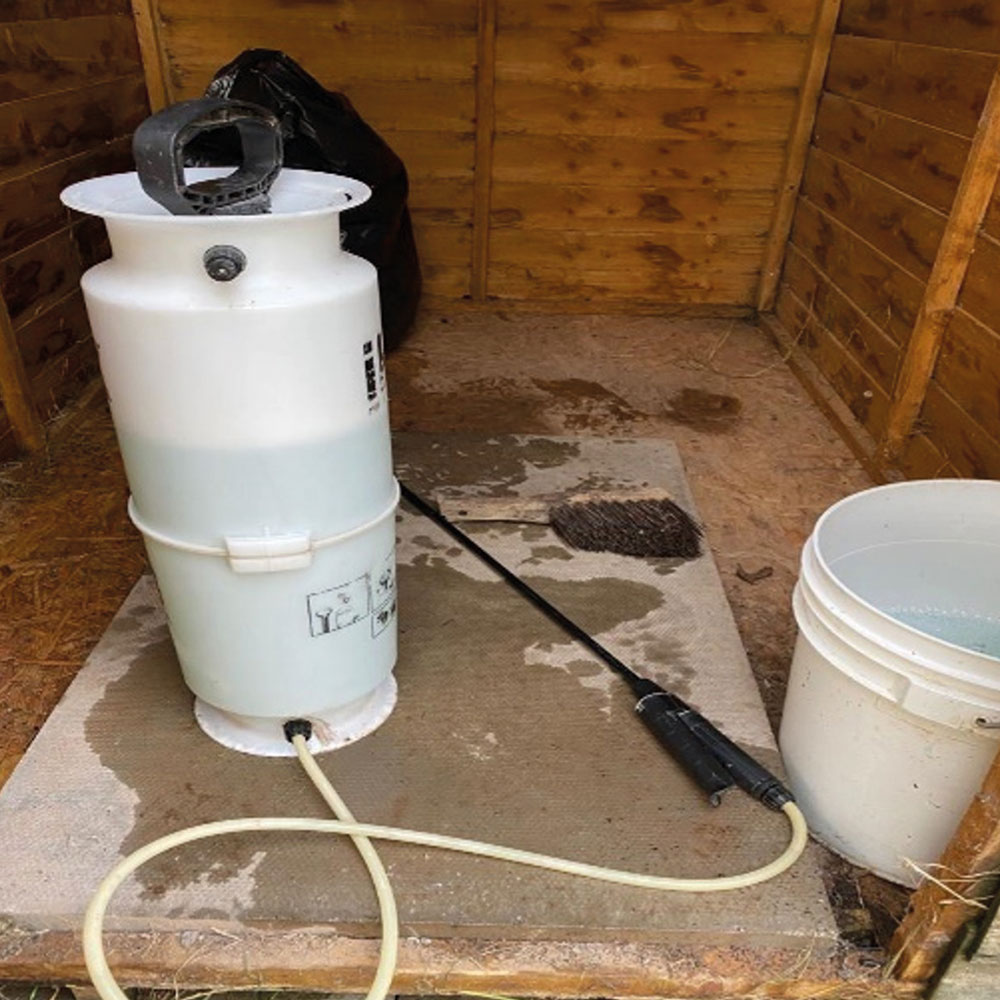 |
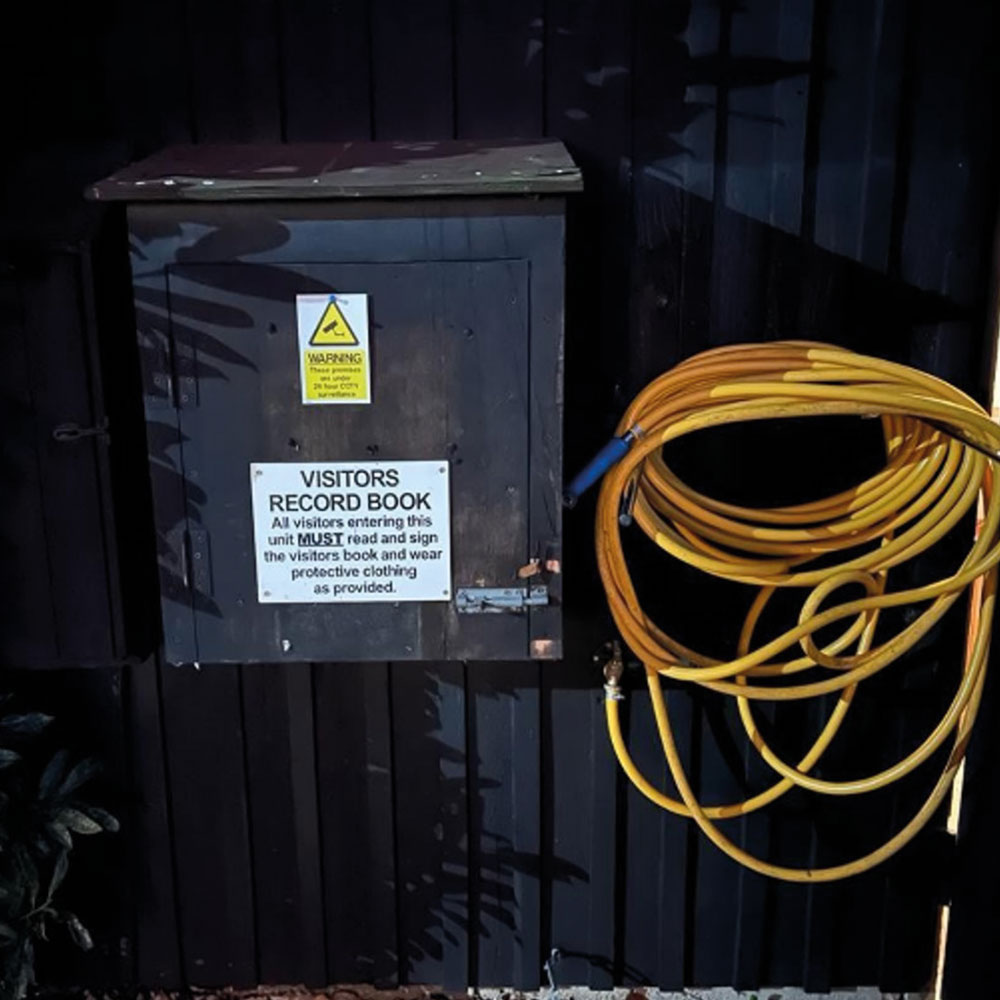 |
This area will have defined access points, routes, parking and delivery points and site security. The General Biosecurity Area should be:
-
As wide as possible but as close as manageable.
-
Manageable so that the discipline for site biosecurity can be practically maintained. It is impractical to try and manage long roadways and large areas of land before arriving at the poultry unit or to try and enforce disciplines on traffic that has no involvement with the poultry unit.
-
Minimise the number of vehicles and visitors who need to attend the poultry unit and enter this General Biosecurity Area.
-
Ensure that unwanted visitors and attendees know that they are entering a biosecure area using gates and signs. Keep these closed (preferably locked). Maintain the discipline even for staff.
-
Ensure that all vehicles are clean and disinfected on entry to the General Biosecurity Area.
-
Cleaning and disinfection are two separate processes. You cannot disinfect dirt!
-
If you cannot satisfactorily disinfect the vehicle, ensure that before arrival and immediately after departure the area on which it has stood is disinfected. This will require provision of an area of concrete or hard standing. Access routes and areas in front of shed should be maintained to eradicate potholes, puddles, or mud.
Liaise with ancillary vehicle operators (egg collection, feed delivery, maintenance) to ensure that their vehicles are maintained clean, that drivers are aware of biosecurity and that they agree to follow the site-specific biosecurity precautions.
-
It is important that the poultry (including escaped birds) do not have access over the roadways on which vehicles within the General Biosecurity Area travel.
Farm vehicles which service the poultry unit (tractors and trailers) should dedicated for the purpose where possible but also cleaned and disinfected the same as feed or egg collection vehicles.
-
Personnel entering the General Biosecurity Area should only be those who have a need to be there, and everyone should dip their footwear in a foot dip with the appropriate concentration of disinfectant. Foot dips should be replenished and replaced to maintain the efficacy of the disinfectant.
All personnel (including employees) entering the General Biosecurity Area or beyond MUST sign a visitor or attendance book.
-
Where possible avoid the need for high-risk visitors (deadstock collectors) to enter the General Biosecurity Area. Take the material to them by leaving it outside the General Biosecurity Area.
Step 2
-
Designate and identify (with signs) the entry points into the poultry unit.
-
Personnel are now entering the Intermediate Biosecurity Area.
-
This area constitutes the working area of the unit (egg collection, control room, site office, staff facilities). Birds must not have access to this area. It is also a food handling and storage area.
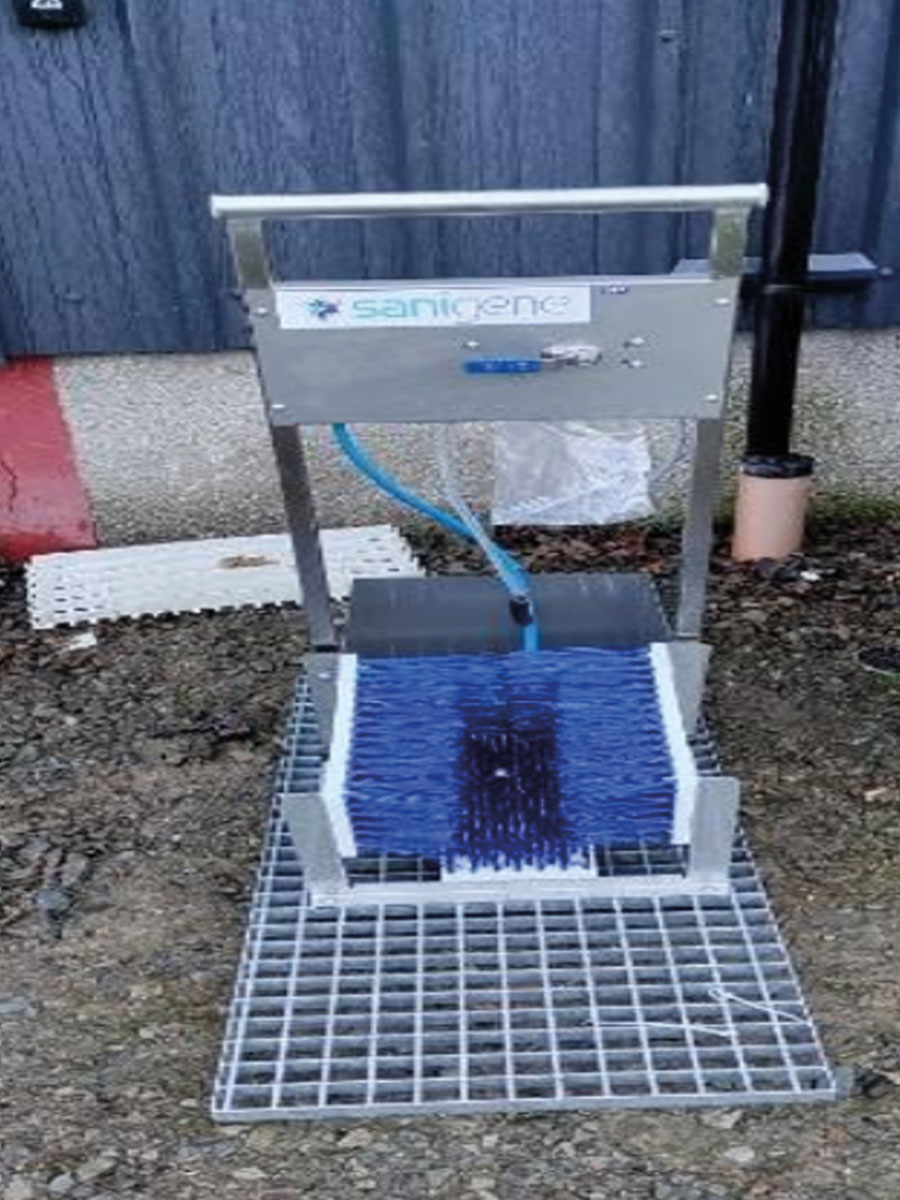 |
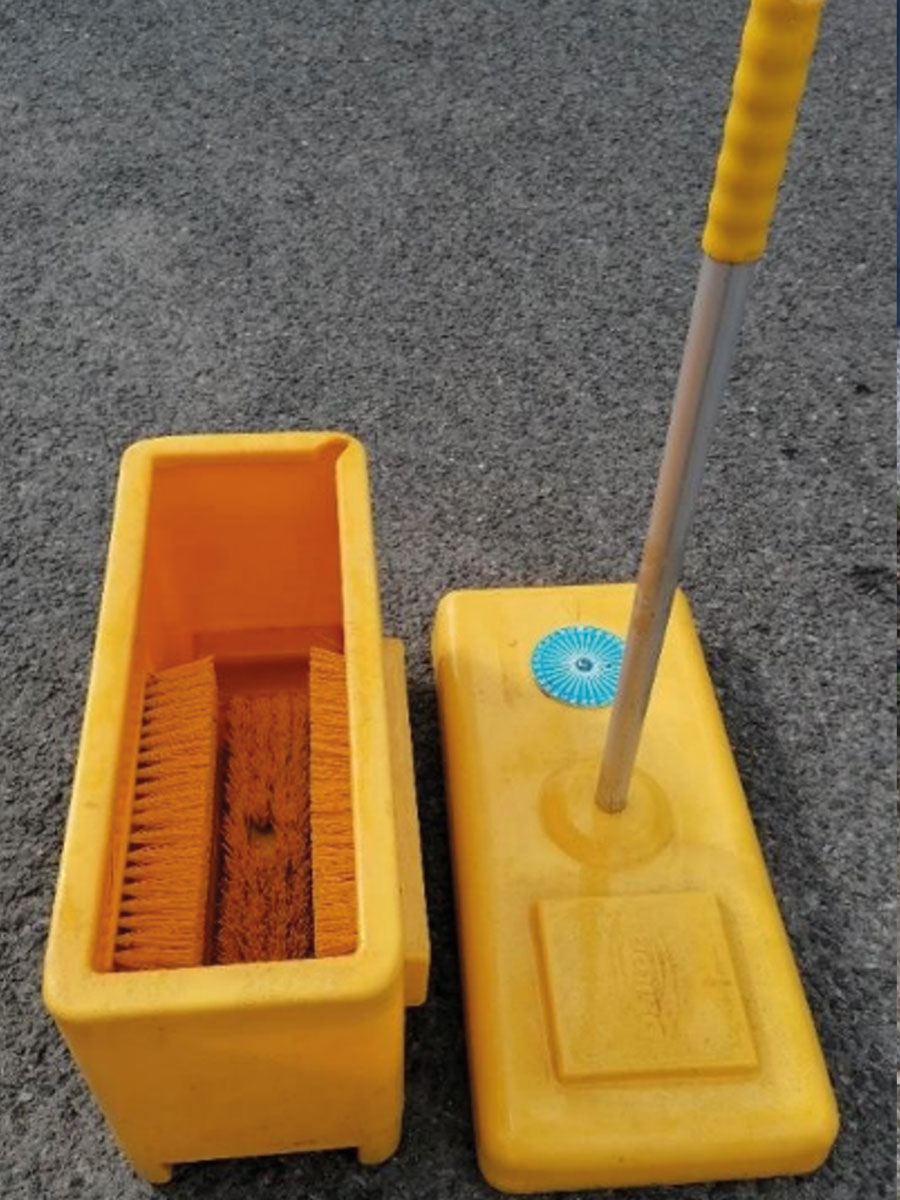 |
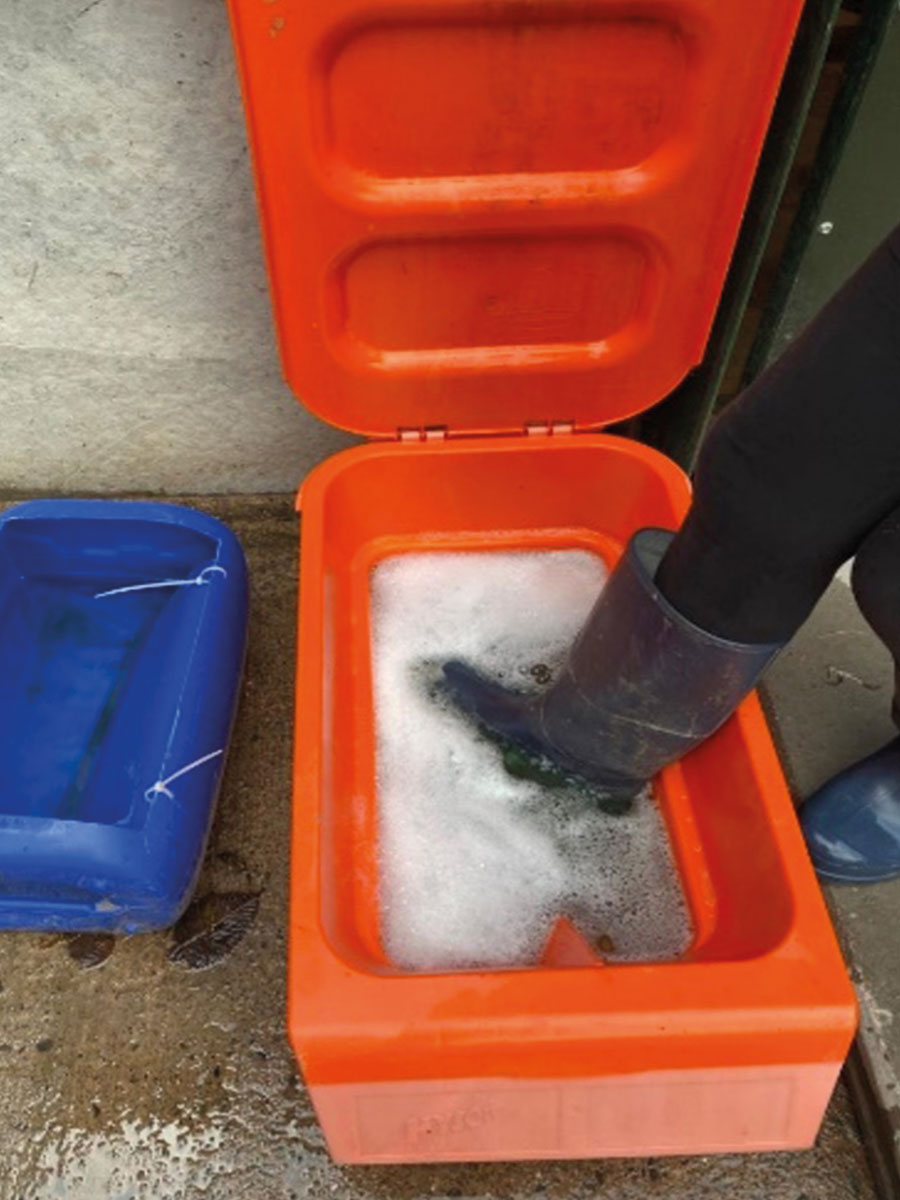 |
-
Before entering the Intermediate Biosecurity Area all outdoor footwear must be dipped in a foot dip with the appropriate concentration of disinfectant. Foot dips should be replenished and replaced to maintain the efficacy of the disinfectant. On entering the Intermediate Biosecurity Area all outdoor footwear should be exchanged for footwear dedicated to the Intermediate Biosecurity area. There should be a solid barrier (30cm)to separate the General Area from the Intermediate Area.
-
All personnel entering the Intermediate Biosecurity Area should ensure that any equipment and clothing brought with them is clean (tools, all weather clothing etc)
Step 3
-
If there is a requirement for anyone to enter the bird space there must designated entry points (with signs)
-
Personnel are now entering the Specific Biosecurity Area
-
This area constitutes the area where there is contact with the birds.
-
On transferring from the Intermediate Biosecurity Area to the Specific Biosecurity Area and vice versa there MUST be a change into dedicated footwear and dedicated overalls for the Specific Biosecurity Area. There must be a solid barrier (30cm) at the transfer point between Intermediate and Specific Biosecurity Areas that prevent any debris, dust or manure being transferred between a “farm” environment and a “food handling” environment.
-
There should be facilities to wash or sanitise hands at the transfer point.
-
Maintaining the discipline for all staff to enforce this procedure on all occasions is important.
-
A similar discipline is required if staff are expected to exit and enter the Specific Biosecurity Area at other points eg fire doors or manure elevator inspection doors.
Step 4
-
If it is necessary or possible to access the Range there must be provision for personnel to change footwear at the point of entry into the Range.
-
There should be designated entry points into the Range. These can be direct from General, Intermediate or Specific areas however the footwear MUST be dedicated to the respective area, NO footwear from any area should be worn in another.
Step 5
-
Monitor and maintain roadways, concrete pads, the range and any areas of high-density wear to ensure that they are free from puddles, mud and debris.
-
If there are areas of open water (ponds or rivers) ensure that the poultry are excluded from access.
-
Immediately clear up and residues of feed or material that could encourage wild birds/vermin.
-
Maintain good site housekeeping to minimise harbourage of vermin (grass cutting, removal of debris or equipment)
-
Maintain good rodent and pest control.
-
Avoid co grazing or contact with other livestock especially pigs.
-
Ensure that all manure is disposed “off site” and clear up spillages and residues.
-
Plan and implement a robust cleaning and disinfection program (terminal and regular)
-
Keep the poultry within their designated areas.
-
Ensure that there is a robust Veterinary Health Plan in place (vaccination, parasite control, review of conditions)
-
Where possible aim for single age between flocks and try and operate “all in all out”
-
If stocking multiple units keep the origins of birds to a minimum and do not allow flocks to mix.
-
If operating multi-age or multiple sites, try and keep staff dedicated to specific units
-
Keep visitors and attendees to a minimum.
-
Keep entrances and access points closed or locked as much as possible.
-
Ensure signage is clear.
-
Induction and training of staff on the procedures and objectives and maintain disciplines.
-
Keep it practical.
-
Ensure protective clothing, foot dips and sprayers, disinfectant concentrations and replenishment are regularly monitored and maintained.
-
Foot dips must be large enough to allow full dipping of boots. Only approved disinfectants of relevant government body (DEFRA/DAERA) should be used at the recommended concentrations.
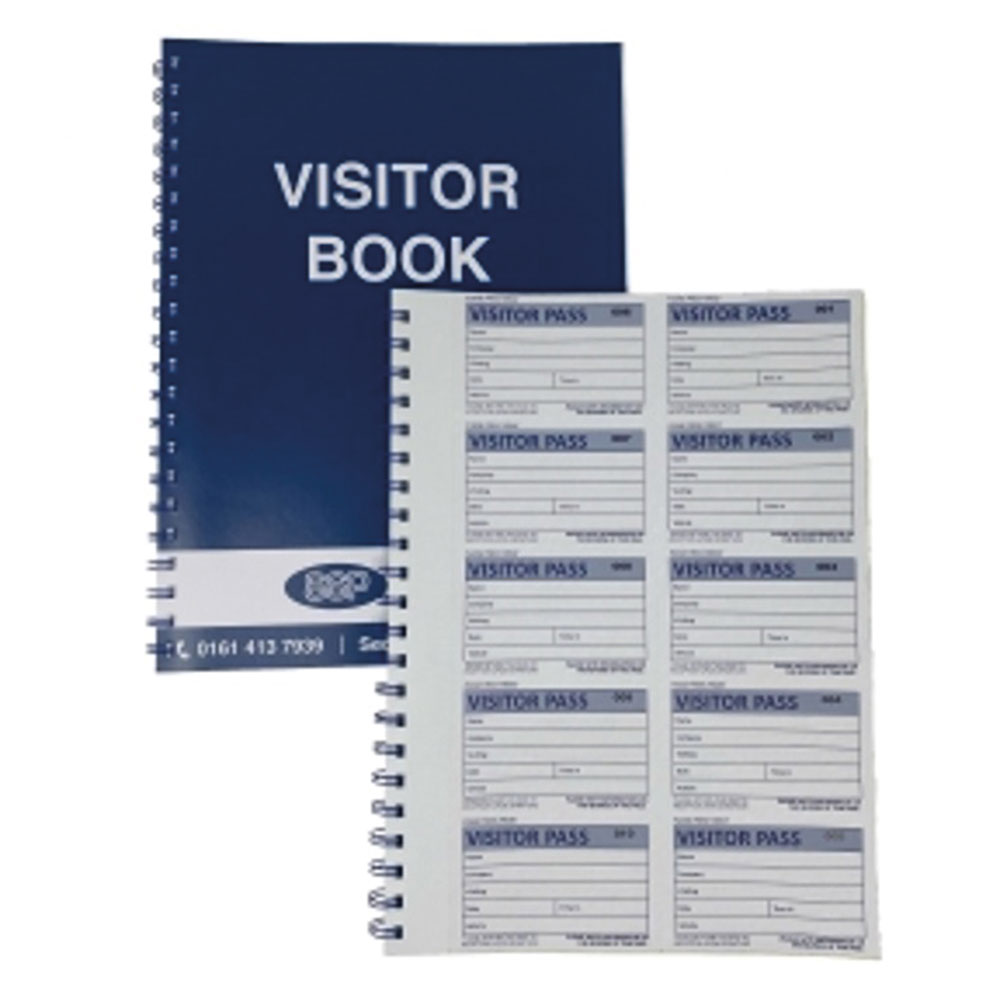 |
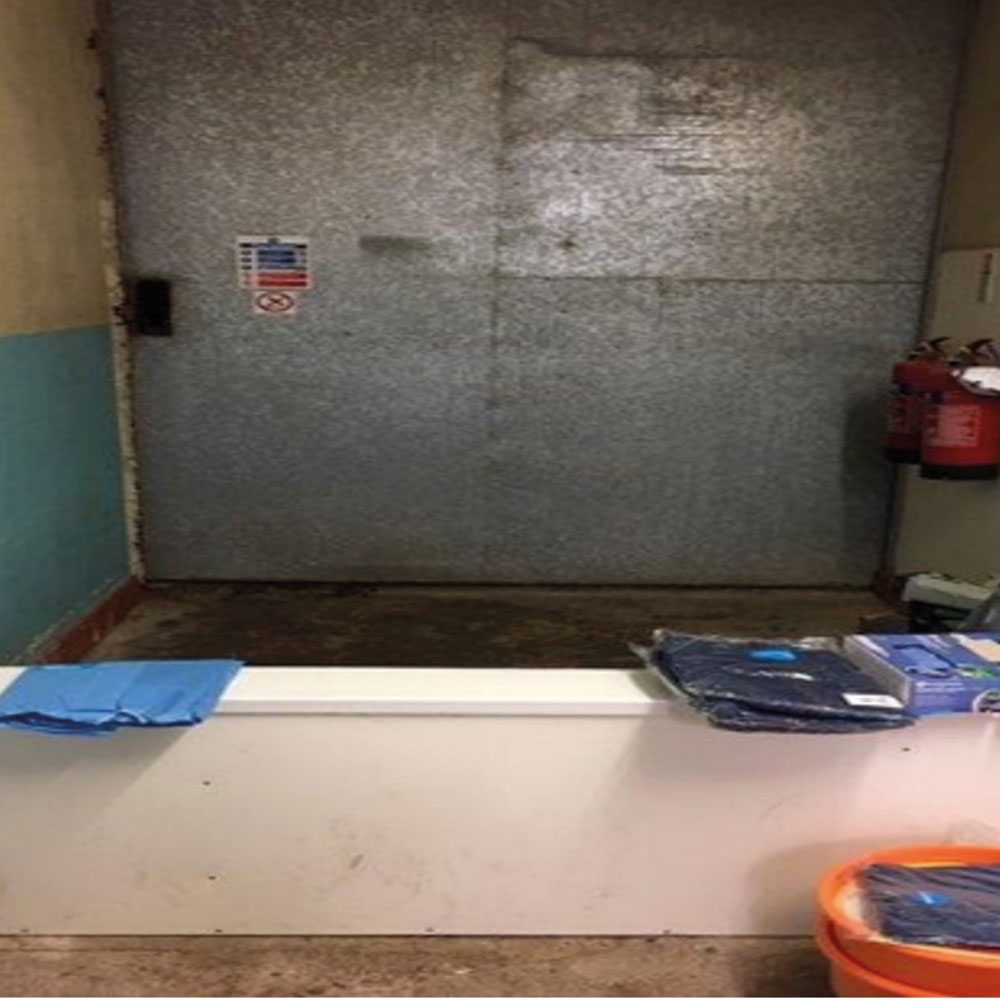 |
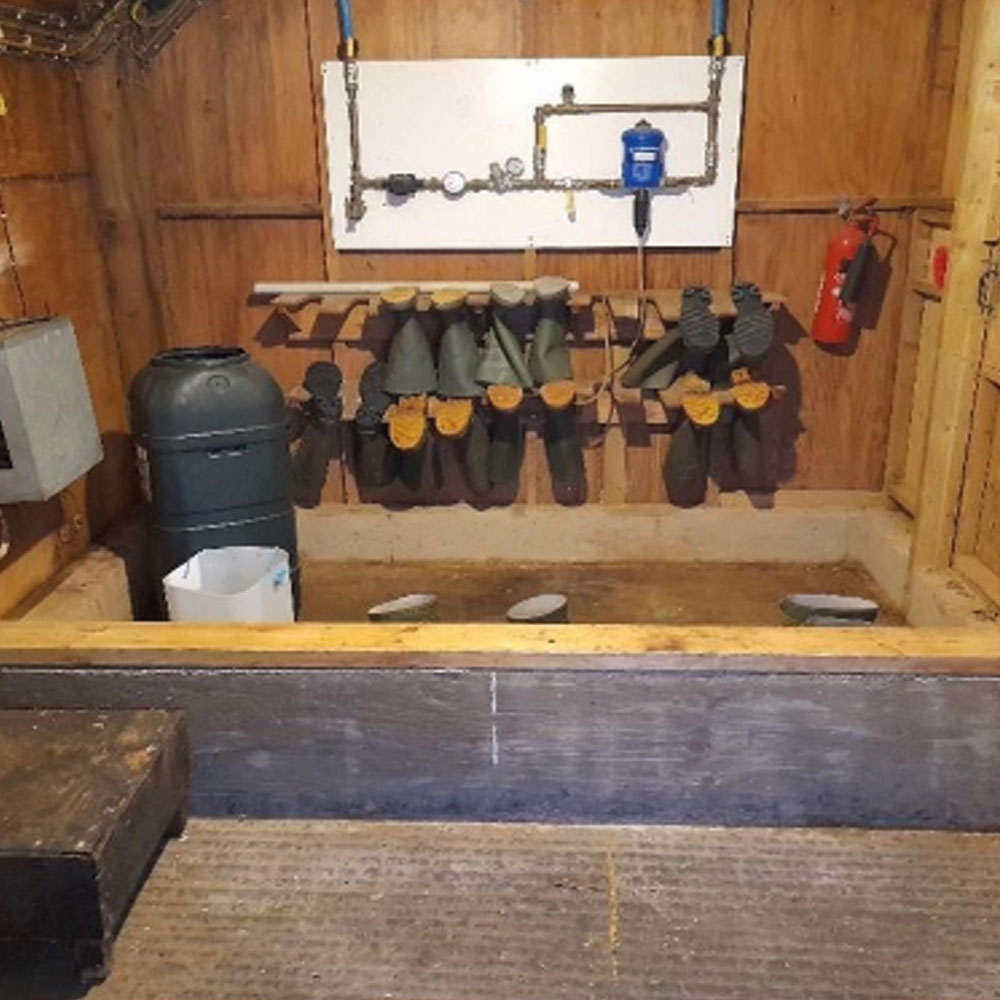 |
|
Visitor and Attendance Book need to be filled out for traceability |
Change to clean overalls, masks etc |
Designated boots and step over barrier |
Step 6
Step over barrier and extra biosecurity with boot covers
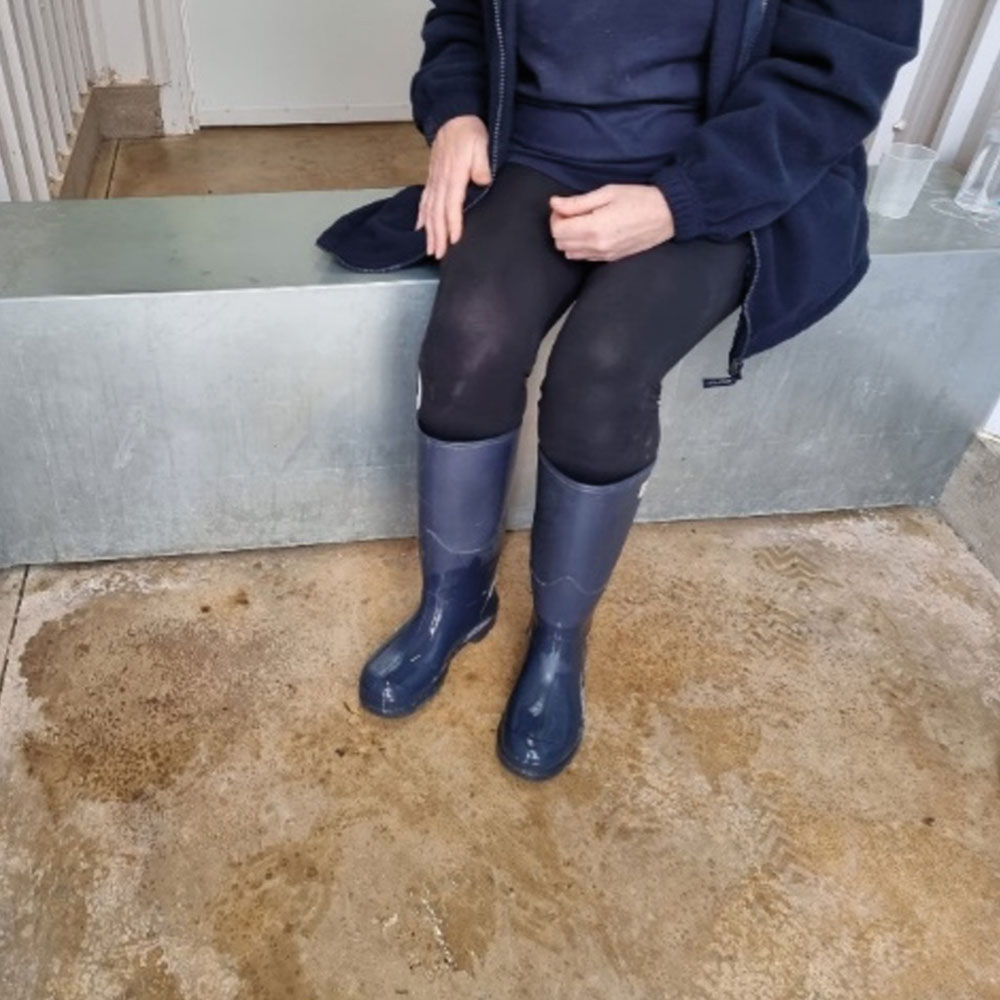 |
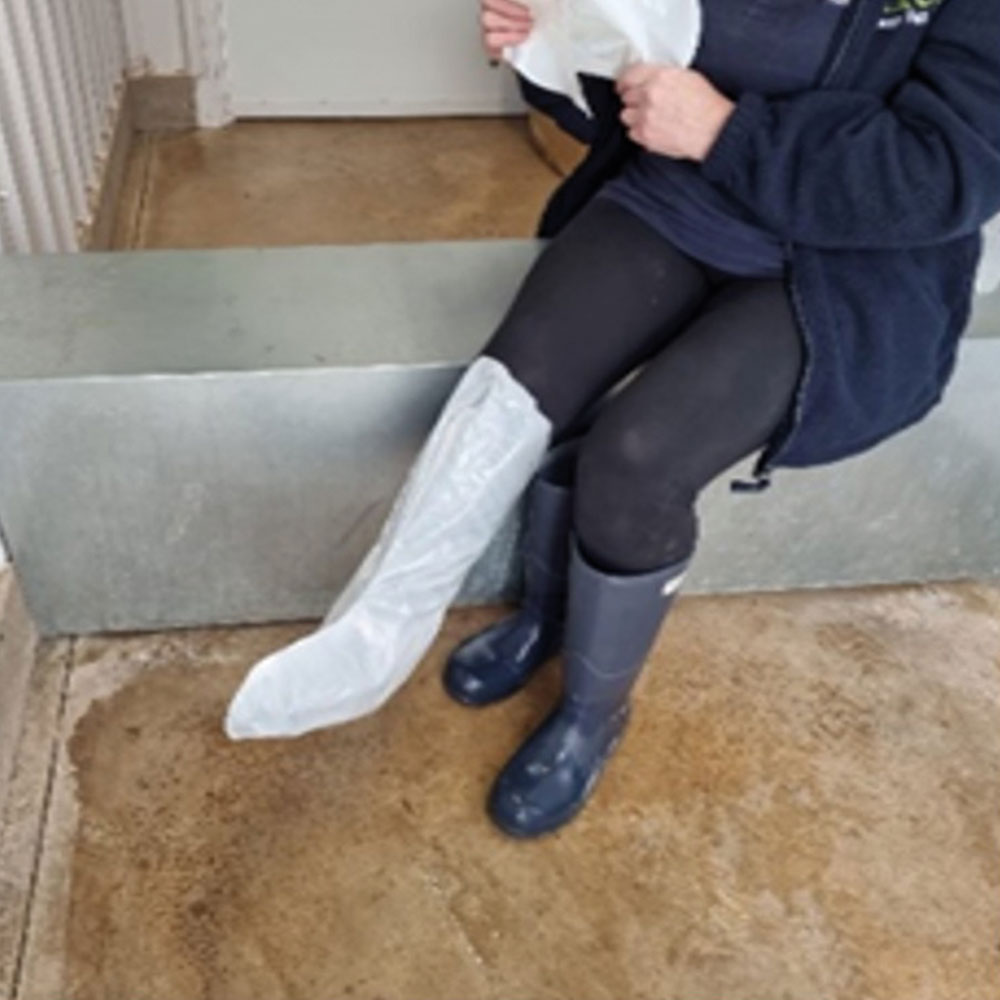 |
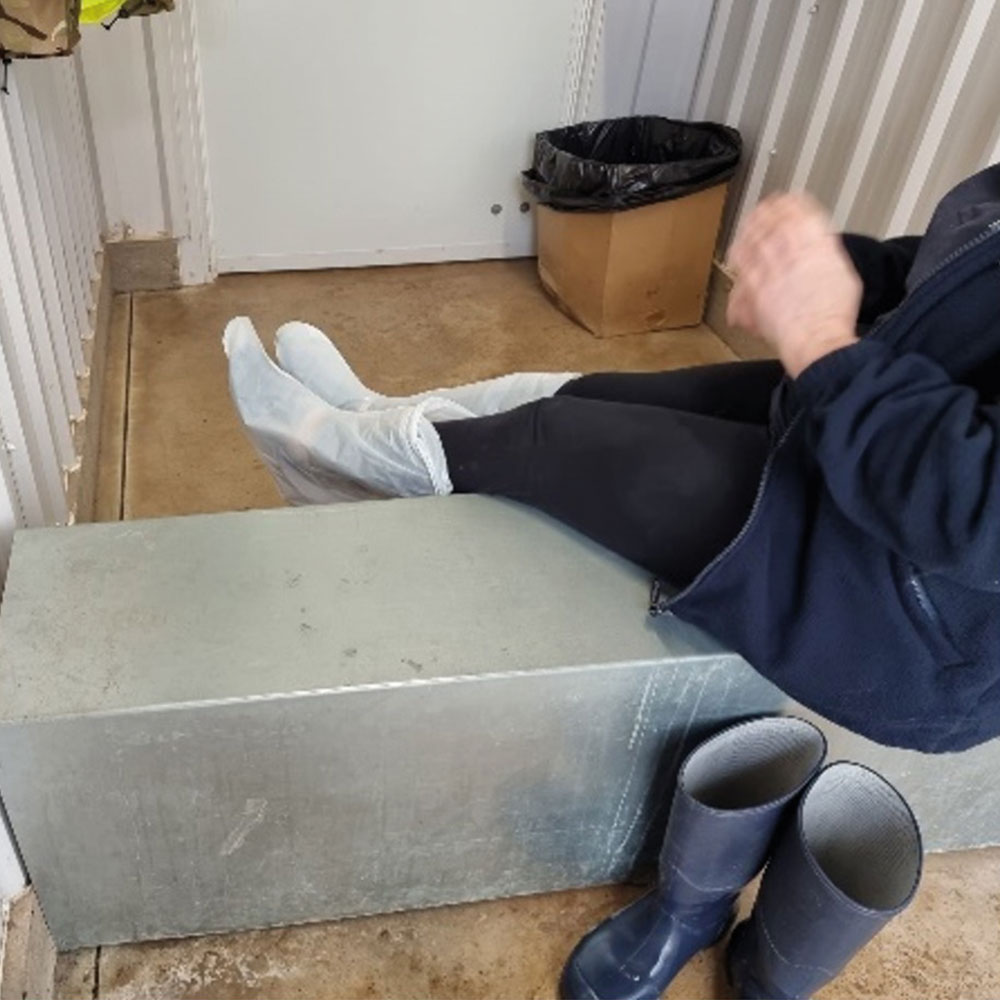 |
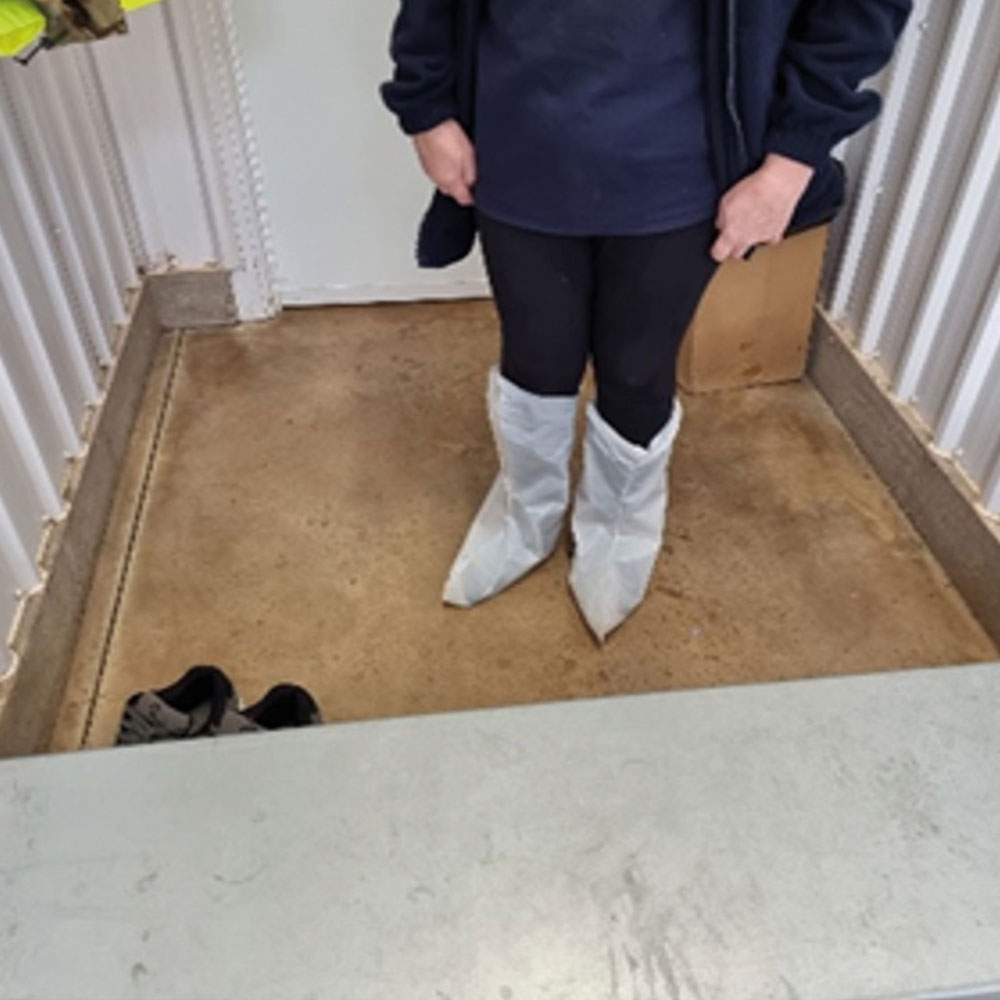 |
Step 7
Cleaning hands with sink or sanitizer
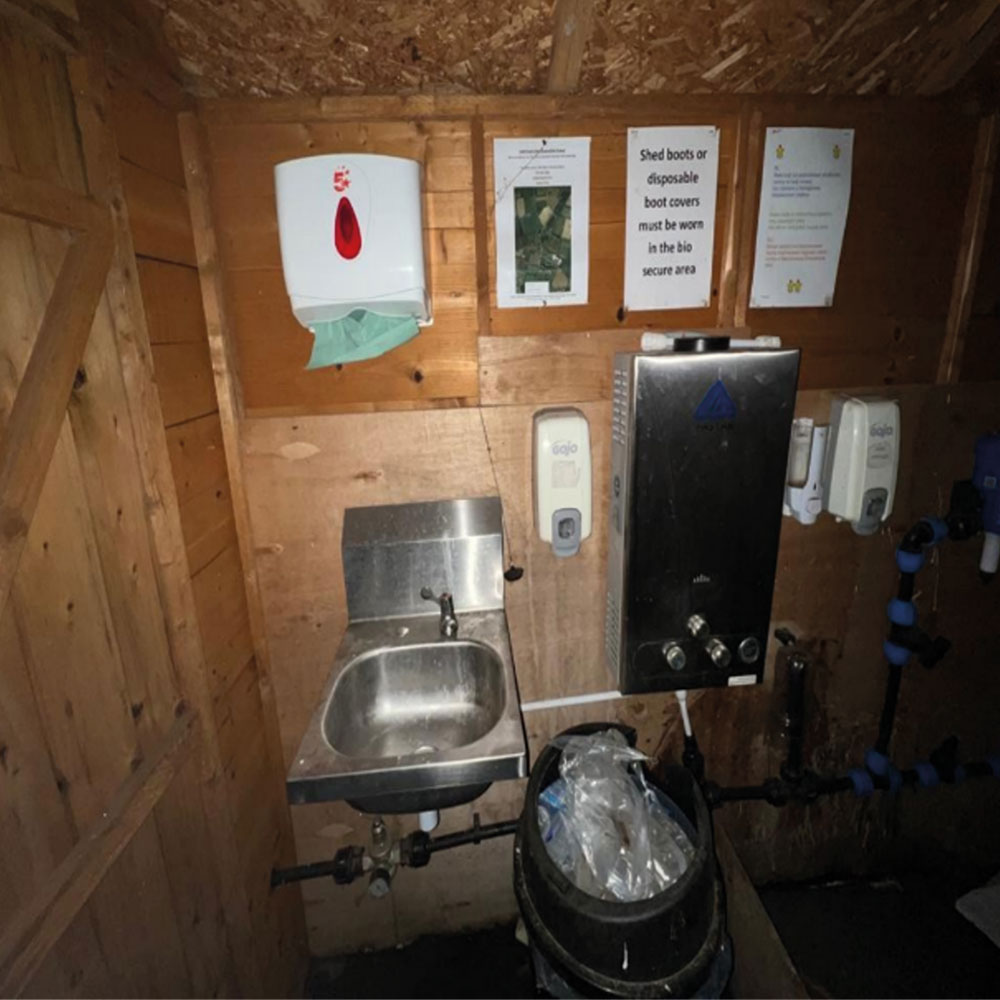 |
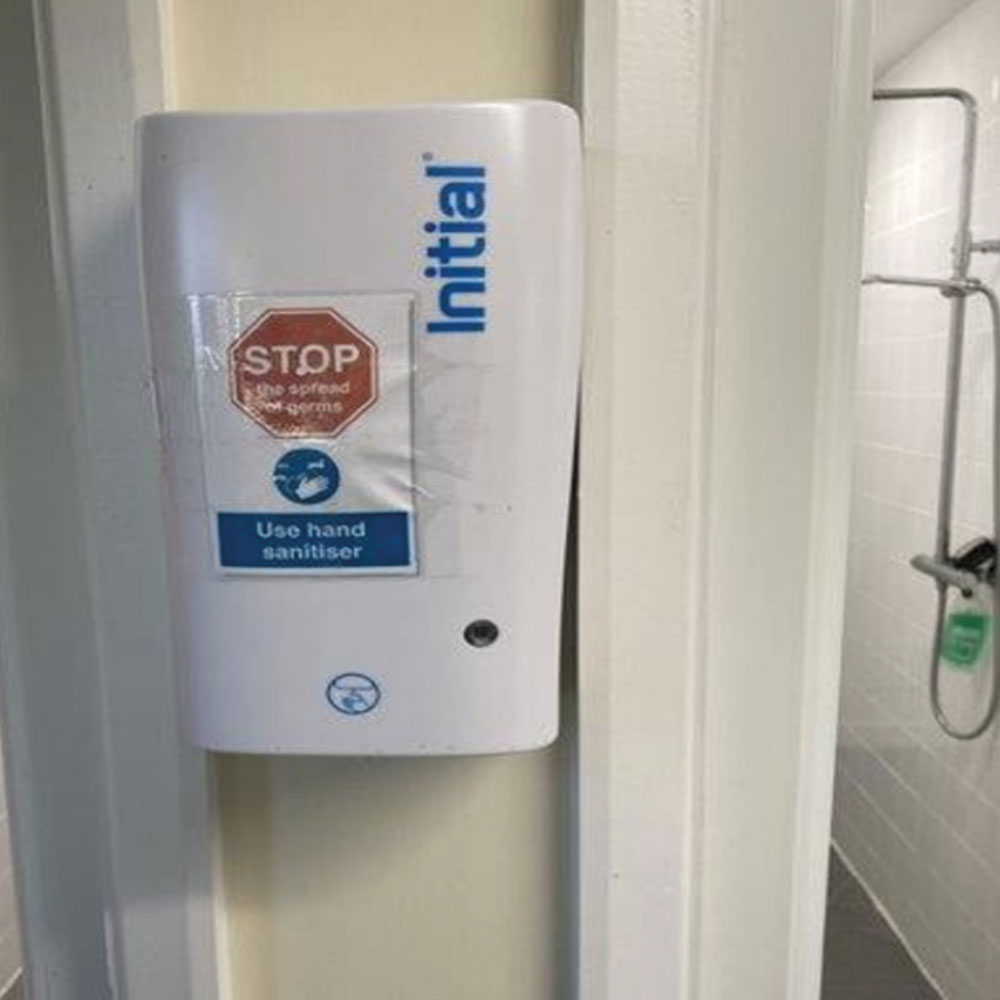 |
Step 8
Additional footwear before entering the poultry shed
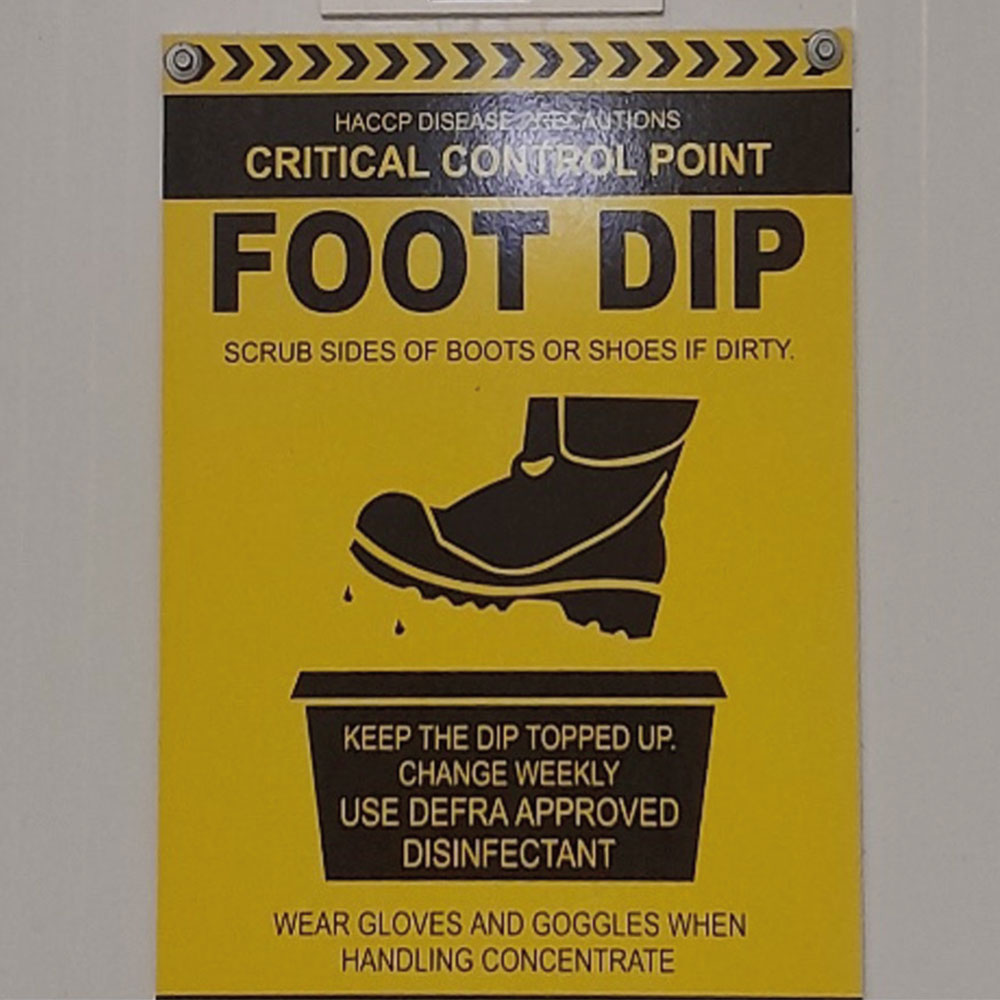 |
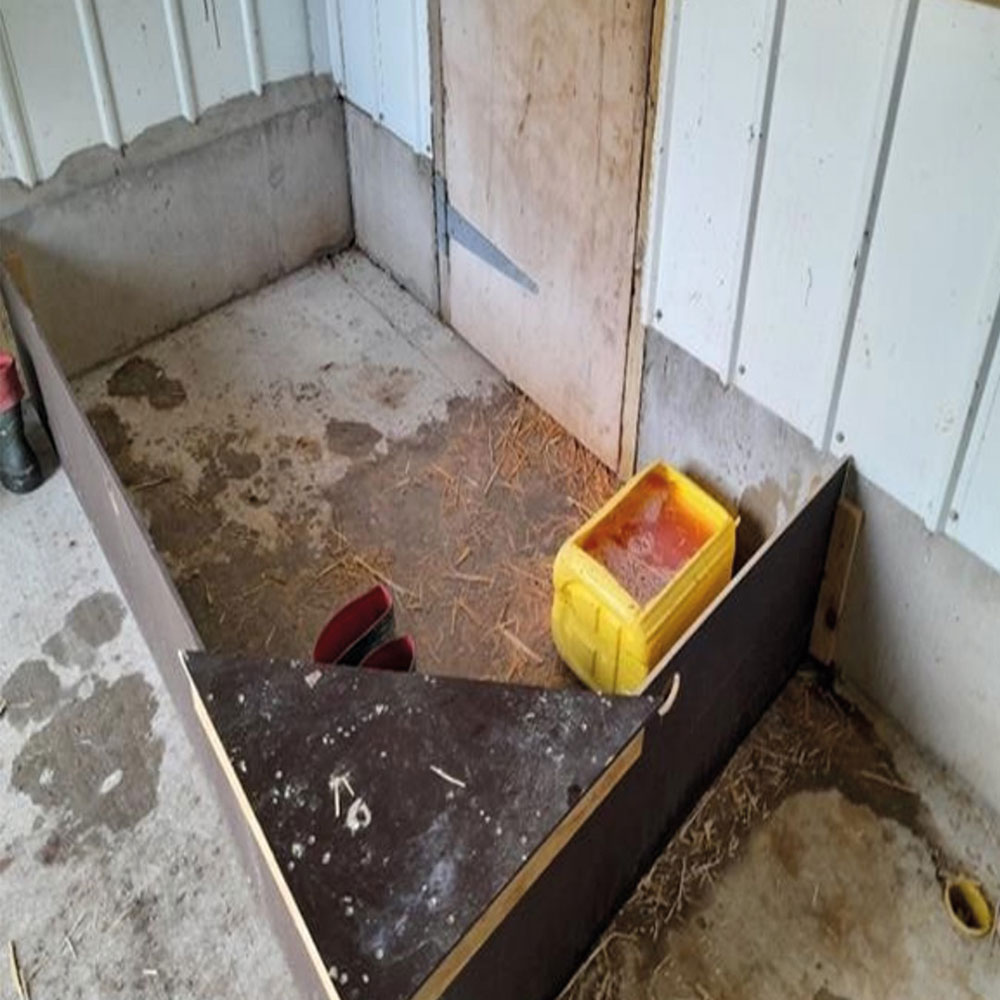 |
Additional points to consider
-
Where an egg store is at the back of the shed and it requires transfer of egg through the Intermediate Area and the removal of the biosecurity barrier at the entrance, of course the barrier should be constructed to be easily removable. So that the Intermediate area is not compromised in terms of biosecurity, a virtual corridor should be established through the Intermediate Area. This corridor should be kept clear and clean, and a procedure should be in place to clean and disinfect the floor after transfer. Alternatively, the producer, following the correct procedures within the Intermediate Area, should transfer the eggs to the entrance ready for collection therefore avoiding the need for the driver to enter the Intermediate Area at all.
-
Health and safety has often been raised as a justification for not having a 30cm barrier as it is deemed a trip hazard. Any H&S risk assessment does not prohibit the installation or use of any equipment, it just means that the operator has to implement appropriate measures to mitigate the risk. Therefore, if tripping and falling is considered a risk for any employees or visitor then the mitigation might be to provide a chair or bench that allows them to sit, change footwear and swing legs over the barrier, or provide handrails.
-
In order to ensure that the discipline surrounding the use of 30cm barrier is easily and consistently enforced , a bench that is wide enough to sit on but too wide to easily step over means that it will not easily be bypassed without following all the precautions.
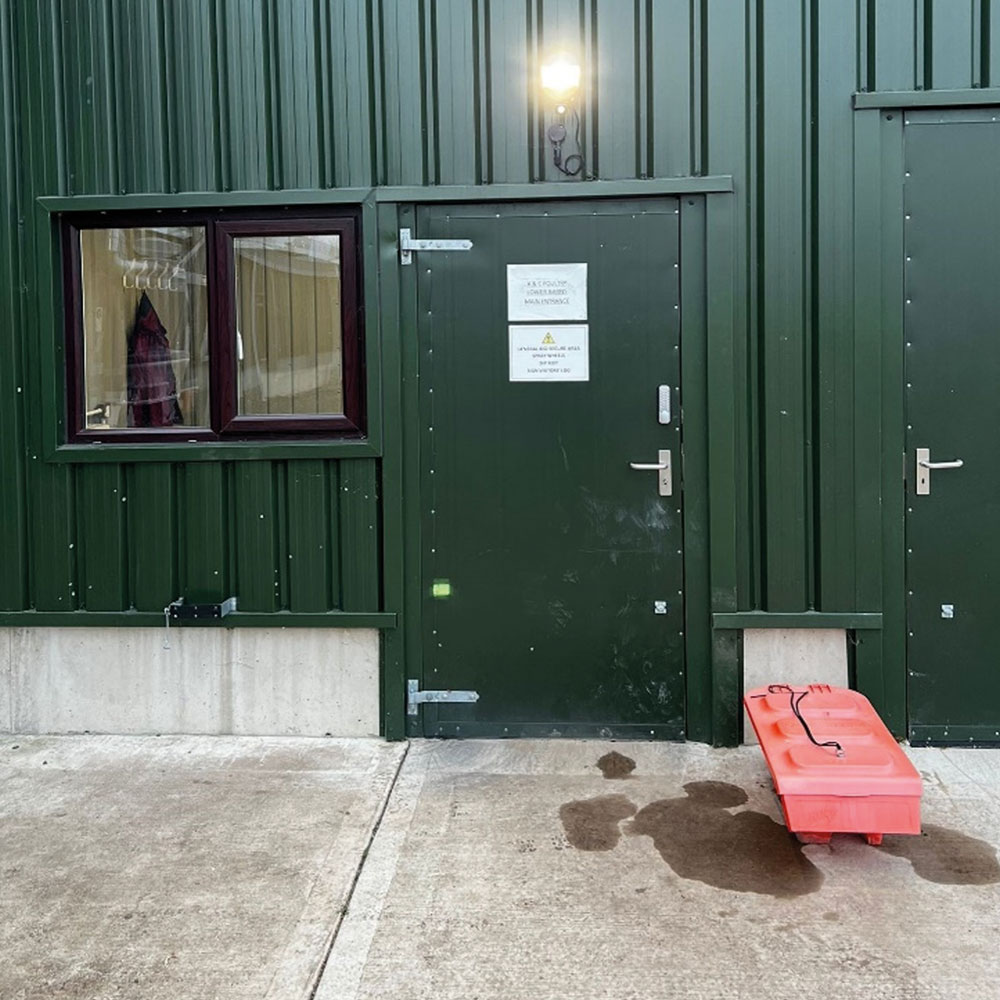 |
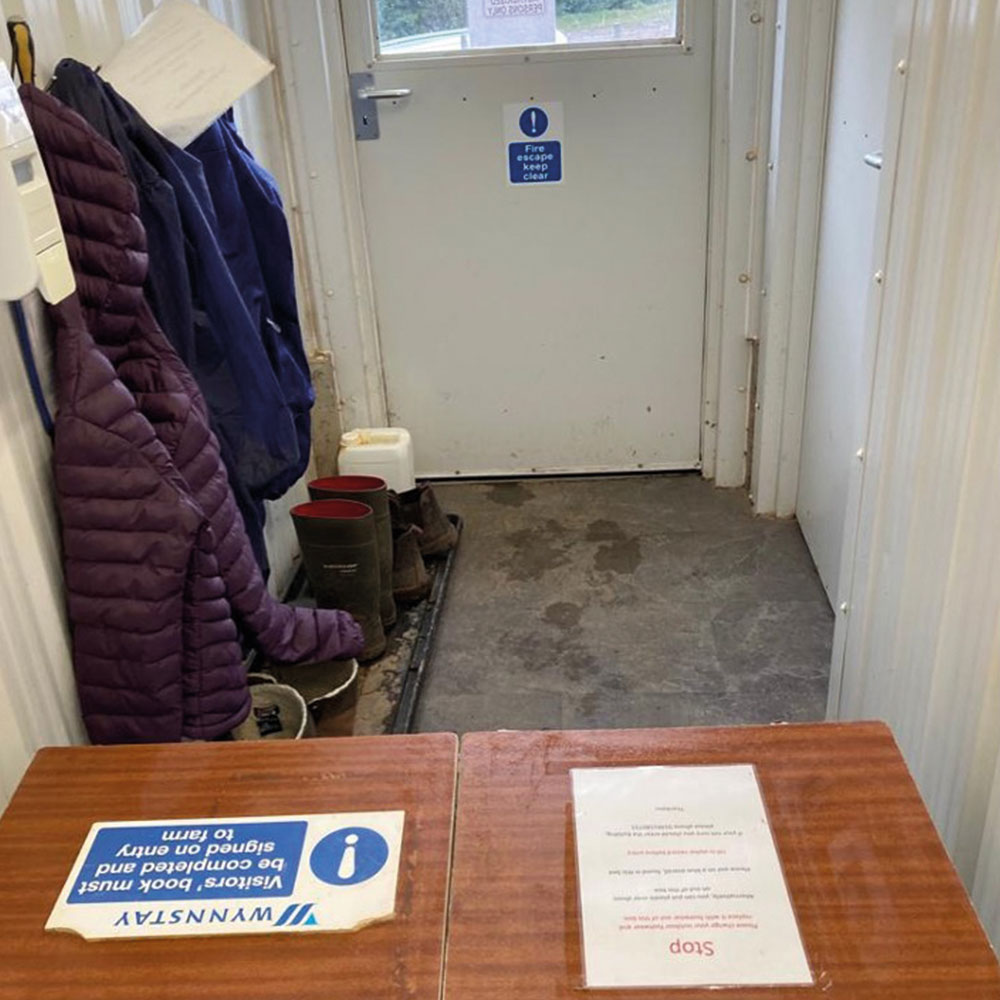 |
